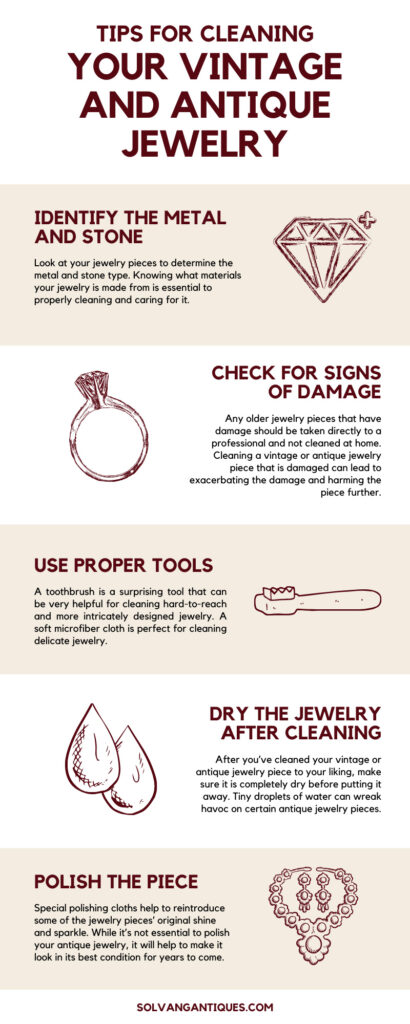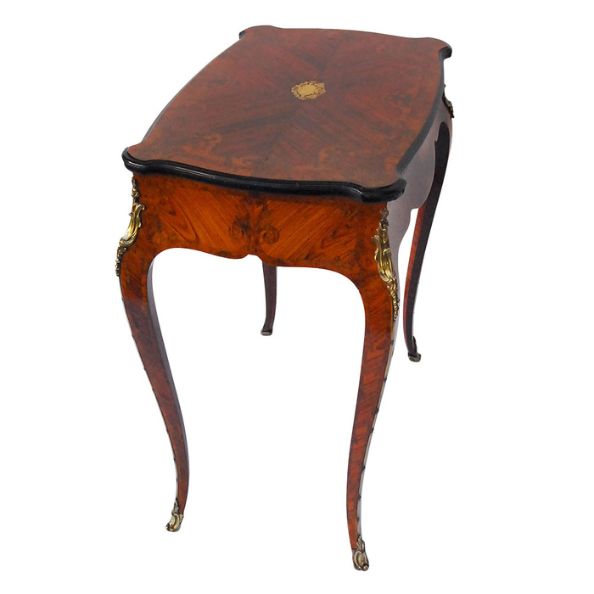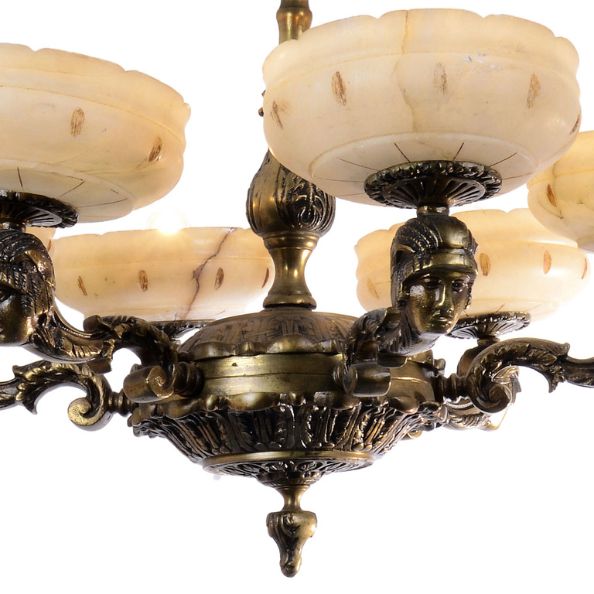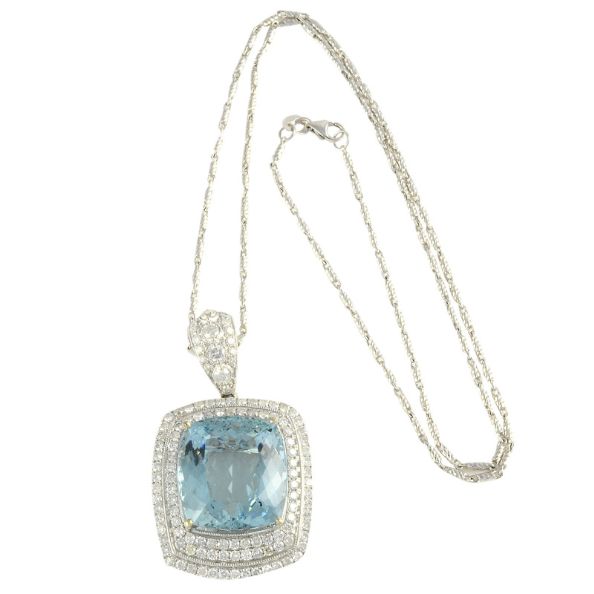Tips for Cleaning Your Vintage and Antique Jewelry
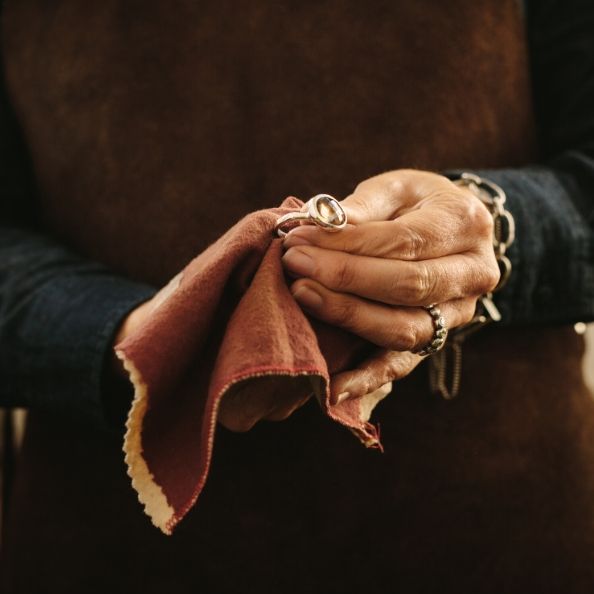

When you find the perfect vintage or antique jewelry piece, you will be eager to take it home and style it with different outfits or display it proudly in your home. Vintage and antique jewelry pieces may sparkle and shine when you take them home, but they need to be kept up and maintained to continue to show their original splendor. Cleaning your vintage and antique jewelry every month or two will keep it as beautiful as the day you bought it. Vintage jewelry is between 50 and 100 years old, while antique jewelry is over 100 years old. With pieces as old as these, some special care may be in order. Maintaining your jewelry will help to preserve for more years to come. When looking to clean your vintage and antique jewelry, you may need to take special precautions that jewelry made more recently may not require. Check out these tips for cleaning your vintage and antique jewelry.
Identify the metal and stone
Look at your jewelry pieces to determine the metal and stone type. Knowing what materials your jewelry is made from is essential to properly cleaning and caring for it. If you’re not sure what metal is used in the jewelry, contact a trusted jeweler or antique dealer for more information. If you aren’t certain of the stones used in the piece or are unsure of their authenticity, contact a trusted jeweler. If a stone is synthetic and not authentic, its cleaning requirements will differ, and cleaning it improperly could lead to damage.
Different metals require different cleaning substances and care. Silver needs to be treated differently than gold does, as is also the case with platinum or other fine metals. Silvers can be polished with a silver polishing cloth while other materials require other cleaning solutions.
Identifying the stone type is also important to knowing how to properly clean it. Diamonds, rubies, and sapphires are able to withstand cleaning using heat, while other stones such as emeralds and opals will require less harsh methods.
Check for signs of damage
Give your jewelry piece a once-over and investigate the piece for any signs of damage or extreme wear. Any older jewelry pieces that have damage should be taken directly to a professional and not cleaned at home. Cleaning a vintage or antique jewelry piece that is damaged can lead to exacerbating the damage and harming the piece further. If you notice anything odd with the jewelry, such as a stone missing, a major scratch in the metal, or a chip on a stone, stop cleaning it and take it to a professional to be fixed and assessed for further damage.
Use proper tools
Once you’ve thoroughly inspected your jewelry to determine the metal and stone types and assessed it for any damage, you can get your tools ready to clean your vintage or antique jewelry. Below is a quick breakdown of each tool commonly used in at-home vintage and antique jewelry cleaning.
Toothbrush
A toothbrush is a surprising tool that can be very helpful for cleaning hard-to-reach and more intricately designed jewelry. Get a toothbrush with soft bristles. This is more than likely one of the least expensive toothbrushes at the store and should not have any extra elements such as rubber bristles or whitening abilities. The brush when used for jewelry cleaning will simply be dipped in a cleaning or polishing solution and gently brushed against the metal in a piece.
Soft cloth
A soft microfiber cloth is perfect for cleaning delicate jewelry. It must be soft enough not to scratch the metal but still able to clean properly. Many jewelry stores and dealers carry cloths made especially for jewelry cleaning or can make a recommendation on cloths they prefer to use. Pay attention to what the soft cloth is made of to make sure it won’t scratch your valuable pieces.
Cleaning solution
To clean your jewelry you’ll need to make or purchase a cleaning solution. You can simply add a few drops of window cleaner to warm water and gently brush the jewelry with a brush or cloth, being careful not to scratch or rub too hard on the surface. For silver, you can invest in a silver polishing cloth and gently remove any tarnish. For heavily tarnished materials, you may need to consult a professional jeweler. Too much scrubbing can damage the jewelry, and professionals will have the proper tools for removing heavy tarnish without damaging the pieces.
Dry the jewelry after cleaning
After you’ve cleaned your vintage or antique jewelry piece to your liking, make sure it is completely dry before putting it away. Thoroughly dry the piece with a soft towel or cloth and then hang the piece to allow gravity to help do the rest of the drying job.
Polish the piece
Once the piece is completely dry, take a special polishing cloth and gently run it over the metal in the jewelry. These cloths are available at most jewelers and online for purchase. Special polishing cloths help to reintroduce some of the jewelry pieces’ original shine and sparkle. While it’s not essential to polish your antique jewelry, it will help to make it look in its best condition for years to come.
Vintage and antique jewelry needs special care. It is more difficult to maintain than the mass-produced jewelry of today because of its age and intricate designs. Whether you’re looking to clean antique brooches and pins, rings, or other pieces, be sure to consult a professional before embarking on your cleaning journey. Keep in mind when purchasing these pieces to buy only from dealers that you trust, such as Solvang Antiques. We have a wide range of antique and vintage jewelry pieces and experts available to consult.
